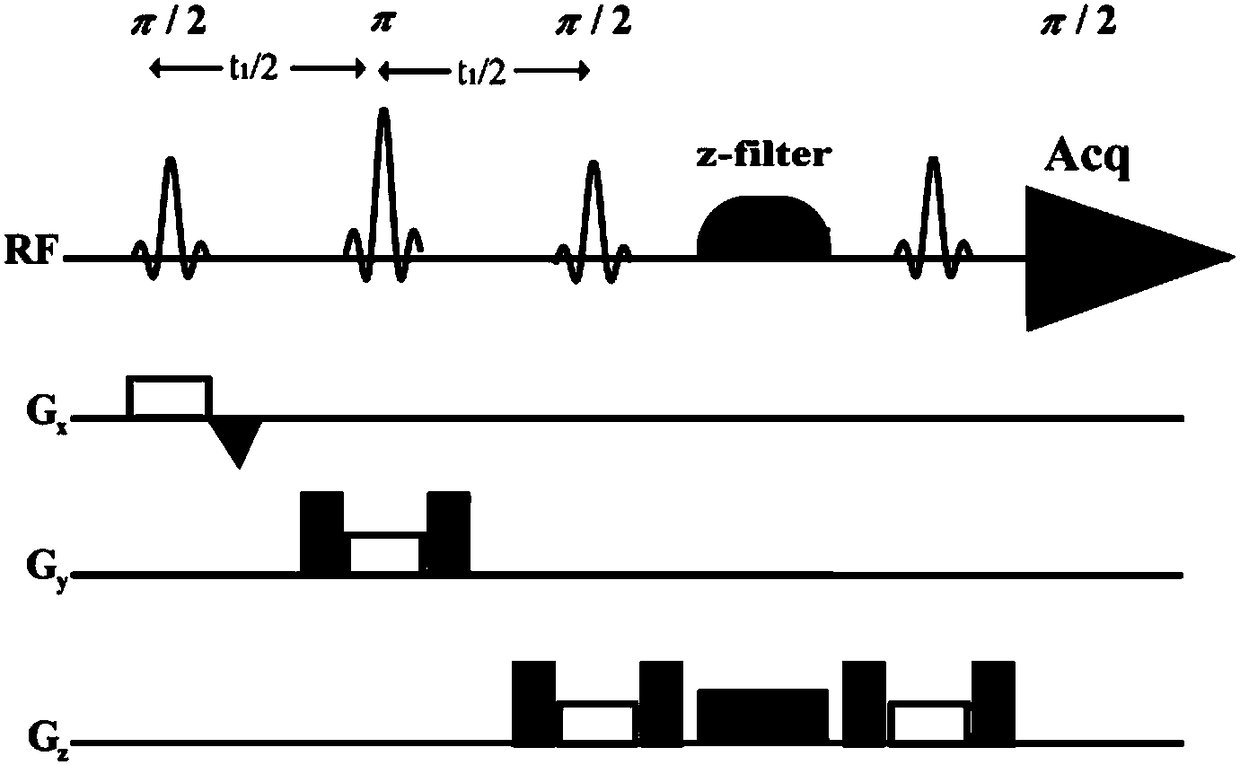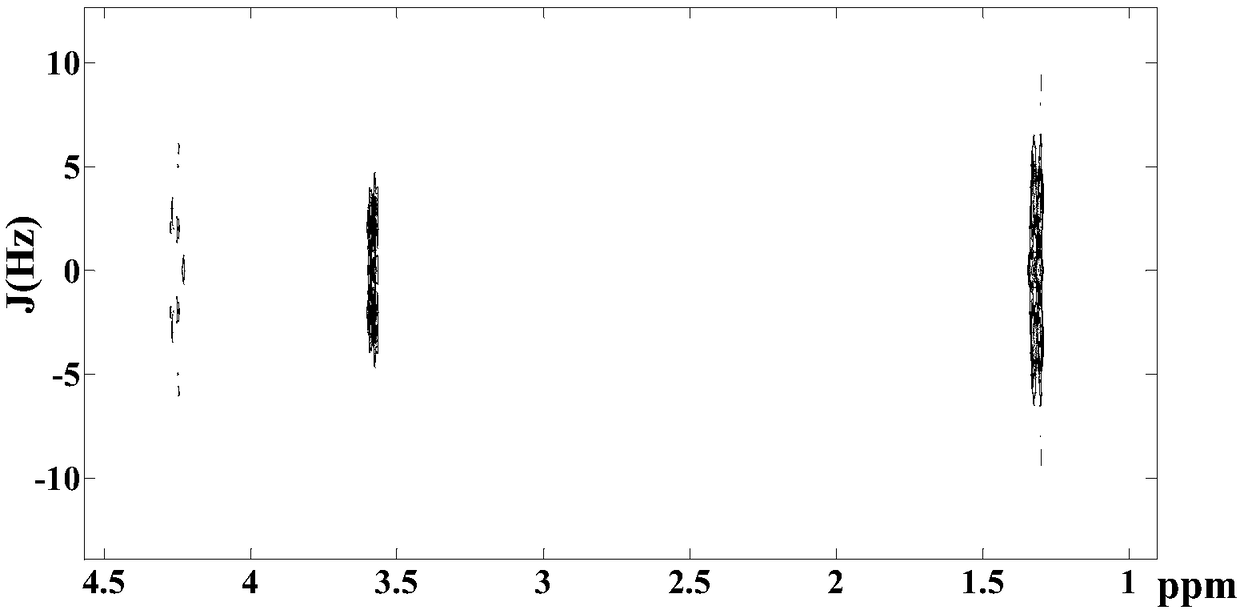Single-voxel localized 1-D high-resolution homonuclear decoupling spectrum method
A high-resolution, high-resolution technology, applied in the field of nuclear magnetic resonance spectroscopy detection, can solve problems such as spectral peak crowding, spectral peak signal attribution, and signal quantification troubles, and achieve phase distortion elimination, wide applicability, and hyperspectral The effect of resolution
- Summary
- Abstract
- Description
- Claims
- Application Information
AI Technical Summary
Problems solved by technology
Method used
Image
Examples
Embodiment Construction
[0020] The present invention will be further described below in conjunction with the accompanying drawings and specific embodiments.
[0021] A single voxel localized one-dimensional high-resolution homonuclear decoupling spectroscopy method, comprising the following steps:
[0022] 1) Construct the z-filter module and write the sampling sequence code, add a 180-degree adiabatic linear sweep chirp pulse and a gradient G applied at the same time after the conventional two-dimensional localized coherent spectrum, the duration of the chirp pulse and gradient G are equal, and the gradient The amplitude of G remains constant, and a 90-degree selective pulse applied at the end flips the magnetization vector in the z direction to the xy plane for detection;
[0023] 2) Set the sweep range, duration and corresponding gradient G of the chirp pulse according to the selected voxel size of the measured sample and the spectral bandwidth used;
[0024] 3) Put the measured sample into the d...
PUM
 Login to View More
Login to View More Abstract
Description
Claims
Application Information
 Login to View More
Login to View More - R&D
- Intellectual Property
- Life Sciences
- Materials
- Tech Scout
- Unparalleled Data Quality
- Higher Quality Content
- 60% Fewer Hallucinations
Browse by: Latest US Patents, China's latest patents, Technical Efficacy Thesaurus, Application Domain, Technology Topic, Popular Technical Reports.
© 2025 PatSnap. All rights reserved.Legal|Privacy policy|Modern Slavery Act Transparency Statement|Sitemap|About US| Contact US: help@patsnap.com



